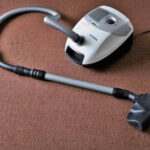It takes little effort to just throw clothes in the washer, turn on the normal cycle and snuggle on the sofa waiting for the machine to do its job.
But if you want your new blue jeans to stay blue, and your black cotton t-shirts not to look navy, you better go out of your way to learn the best laundry practices to keep your clothes from fading.
Learning how to keep clothes from fading should not be hard. A little inquiry from your old lady and a few minutes devouring this article should make you more particular about how you handle apparel.
How to Keep Clothes from Fading

If faded clothes are your nemesis, the trouble is mostly originating from your laundry techniques. You can grace your wardrobe with a collection of nice and pretty colorfast garments, but if your washing skills are under par, it will be difficult to have any of them looking new for the long term.
In summary, keep your clothes looking new by following the instructions in the care tag before everything else. If the instructions are hard to follow, stay away from such apparel the next time you go for shopping. Other things you need to do include turning darks and colors inside out when washing, separating laundry properly, avoiding heat, making the right detergent choice and storing clothes well.
#1. Check the Care Tag When Buying
Determining how you need to care for clothing should start right from the time you go for shopping. Do not let shopping excitement deter you from paying attention to little details about the clothes that grab your attention.
Avoid filling your closet with clothes that are difficult to care for. Dry clean only! Stay away from it. Spot clean only! What will you do if the entire clothing is dirty?
The more care a garment needs, the sooner it is likely to end up in the bin. You can own a few extra care pieces for special occasions. But that’s about it. Do not make shopping for demanding clothes an over-indulgence.
A critical detail to look for is colorfastness. It hurts pay reasonably for clothes, only for them to end up looking like old donations from a cheap thrift store after the first wash.
#2. Check the Care Tag before Washing
Checking the care tag in preparation to care for apparel can singlehandedly turn you into a laundry expert. Turn your garment inside out to find the label, and let it act as a guide for the laundry practices to follow and the ones to avoid.
The most common laundry mistakes occur because of ignoring the given care instructions. That’s how you end up choosing the wrong detergent, the wrong washing method or even the wrong drying approach.
#3. Turn Colors and Darks Inside Out
Turning dark clothes and colors inside out when washing might be a tip from the grapevine but it works. Look at it this way. Clothes go through wear and tear at every point of handling.
If you throw them into the washer especially top loaders, the agitation has impact on the fabric, which gradually affects appearance. Damage can also occur as a result of friction from other fabrics. If you hang clothes outdoors, the sun fades colors, and the impact is worse when you use a dryer.
Turning clothes inside out minimizes impact on outside during washing, drying and storage.
Other benefits for washing clothes inside out include protecting rivets, buttons and decorative accessories such as beads, studs and sequins, minimizing fabric pilling, and washing sensitive spots such as armpits and collars with better precision.
#4. Sort Laundry Correctly
There is a lot that you can do when it comes to laundry sorting, but the best thing is to get down to the nitty gritties. First of all, you need to sort your laundry by washing method.
Hand wash only clothes have no business in the laundry basket for clothes that are supposed to go to the washing machine. The same case applies to dry clean only items.
You will mostly notice that the washing method of clothing depends on the material. Similarly, the cycle to choose on the washing machine mostly depends on the fabric. So, what happens if a garment is made of blended fabric?
In such a case, TheLaundress recommend that you choose the laundry cycle or instructions for the dominant fabric. For example, if a fabric comprises of 70% cotton 30% another type of fabric, follow the instructions for washing cotton.
Another practical detail to consider weight. Separate light clothing from heavy items such as towels, denim and bedsheets. Further, place smaller items such as bras and shoelaces in a washing bag.
Continue sorting by separating your laundry based on color. Have one bunch for darks, another one for colors and the last one for whites. If you are confused about where to place clothes with two or more colors, group them based on their dominant color. For example, if the dominant color is dark, place them in the bunch of darks.
The main advantages of laundry sorting include protecting clothes from fading as a result of using the wrong detergent as well as preventing color transfer from some items to others.
#5. Choose the Right Detergent
Laundering is much easier when you understand the type of detergents to use for different kinds of clothes. For instance, most whites can be washed in bleach, hydrogen peroxide and other brightening agents, whereas darks cannot.
One way to choose the right detergent is by looking at the care label. Most clothing items provide specific instructions on the choice of detergents and brighteners.
The general rule of thumb is to use chlorine bleach with whites only, to determine whether colors are colorfast before using oxygen bleach, and to avoid using any kind of bleach with darks.
When it comes to detergent, it is best to wash delicate items with gentle detergent, and the rest of your clothing with regular detergent. That said, wash darks with special detergent as such Woolite for darks.
If using home cleaning agents such as baking soda, washing soda, hydrogen peroxide, lemon juice and vinegar, be sure to not to use the ones with brightening effects to wash darks and non-colorfast brights.
#6. Wash in Cold Water
Unless you work in a garage and your clothes are marred with oil or grease stains, cold water practically gets everything clean, with the exception of towels and some synthetic fabrics.
The cold washer setting is particularly perfect for colors and darks. It removes dirt without causing fading. If you notice some clothes releasing a bit of color, add a quarter cup of salt to water.
Other benefits for washing on cold include saving on energy, preventing shrinkage and reducing wrinkling for some fabrics.
During winter, water gets extremely cold in some regions making it difficult for washing machines to clean clothes thoroughly on the cold setting. Switch to the warm water setting if the situation gets here.
#7. Avoid Presoaking
Unless your darks and colors have stains, there is no need to presoak them. And you can still treat individual stains and wash the spots under running water instead of presoaking the entire clothing.
Presoaking increases the duration that your clothes sit in water. Although this might not harm some clothes, it provides the right conditions for loss of color for clothes with unstable dyes.
#8. Choose a Quick Cycle
Clothes that fade quickly are delicates. Therefore, it is important to wash them on a quick cycle. A normal or long cycle increases the length of the time the clothing releases color in the wash solution.
Another way to wash clothes delicately is to ignore the machine altogether and use hands. Hand washing is gentle and safe for most garments.
#9. Rinse on Cold and Avoid Fabric Softeners
Rinse your clothes thoroughly on cold to remove all the soap residue. Rinse once or severally depending on the amount of soap the clothes release to the rinsing water.
You can tell that the clothes are thoroughly rinsed when they stop releasing suds and bubbles to the rinsing water. Poorly rinsed clothes attract dirt easily.
Replace fabric softeners with a ½ cup of white distilled vinegar. Most fabric softeners contain chemicals that have a negative long-term effect on the texture of most fabrics. Items such as towels become less absorbent after you rinse them in water that contains a fabric softener.
#10. Stay Away from the Dryer
Heat is by far the worst enemy for non-colorfast apparel. And not just heat in the dryer. Hot water, dryer heat and ironing heat, all heat speeds up fading and makes your clothes appear older than they actually are.
Line dry or flat dry your darks and colors outdoors under a shade or indoors. Further, ensure that they are inside out when drying. If you decide to toss them in the dryer, choose the lowest heat setting and do not leave them in the dryer until they are completely dry.
#11. Fold and Store Clothes Neatly
After your clothes are completely dry, store them nicely to prevent wrinkling (Have in mind that slightly damp clothes tend to wrinkle easily). Avoid cramming apparel in small spaces such as drawers. Buy hangers for items that need to hanged and organize them well in your closet.
Use hands or a folding board to fold clothing that needs to stay folded.
FAQ
Does salt prevent fading?
Salt can slow down fading, but the question of its effectiveness depends on factors such as how you use it, the fabric of your garment and the kind of dye used on the fabric.
Generally, use salt to soak and wash your new non-colorfast clothes to slow down the pace at which they fade. You can read our detailed article on how to prevent clothes from fading with salt.





